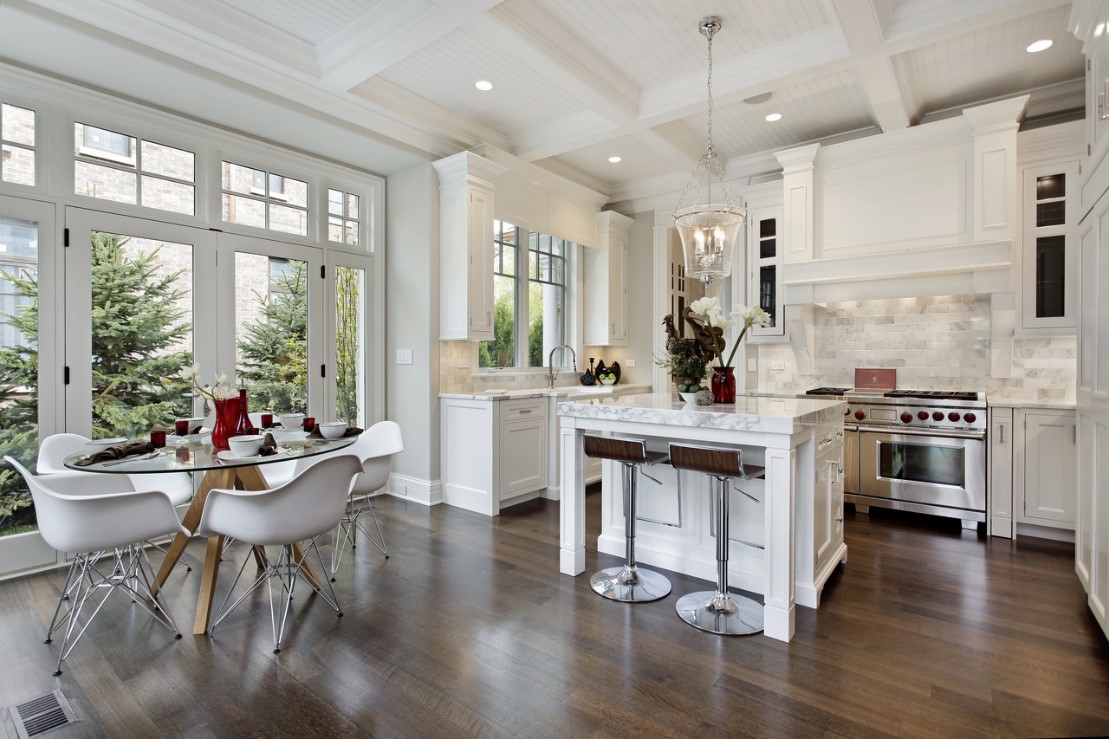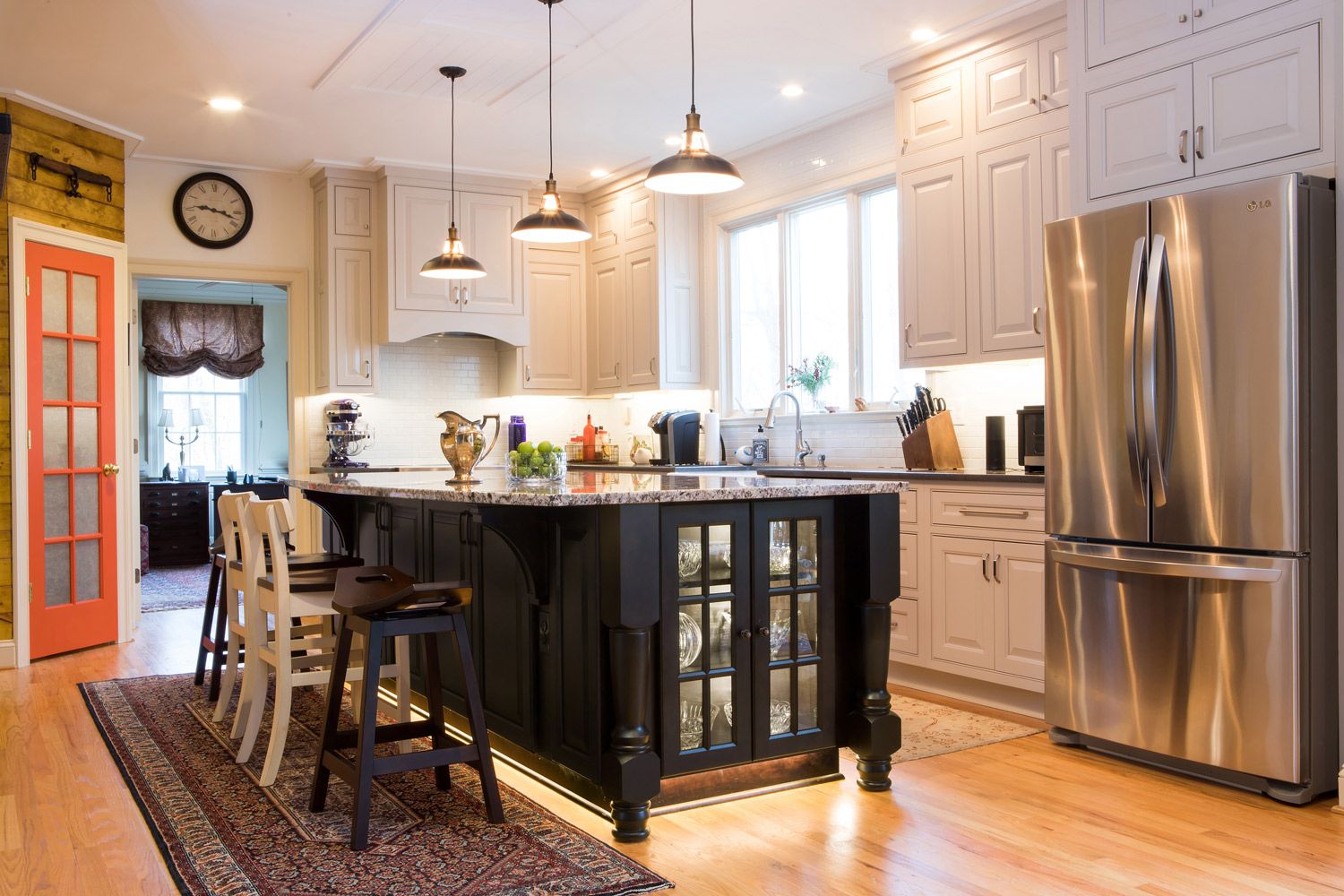Kitchen Lighting Done Right: Why Boston Homes Need More Than Recessed Cans
A layered lighting plan is the secret ingredient that transforms a good kitchen renovation into a truly exceptional one.
Introduction
At Golden Hammer Remodeling, we believe that a successful kitchen renovation appeals to all the senses, and none is more important than sight. While cabinets, countertops, and appliances get most of the attention, it’s the lighting that ultimately sets the mood and makes the space truly functional. After completing hundreds of kitchen renovations in historic Boston homes, from the low-ceilinged brownstones of Back Bay to the sprawling colonials in Newton, we’ve learned that a single type of lighting is never enough. Many homeowners believe a grid of recessed cans will suffice, only to find their new kitchen feels sterile or has frustratingly dark corners. The key to a warm, inviting, and highly functional kitchen is a layered lighting approach. This guide will walk you through the three essential layers of kitchen lighting—ambient, task, and accent—and how to combine them to create a space that is both beautiful and a joy to work in.

1. Ambient Lighting: The Foundation of Your Kitchen’s Glow
Ambient lighting is the general, overall illumination that fills the room and makes it navigable. It’s the foundational layer upon which all other lighting is built. In many older Boston homes, a single, central ceiling fixture was expected to do all the work, which is simply inadequate for a modern kitchen. While recessed cans are a popular choice for ambient lighting, their placement and type are critical.
We recommend using 4-inch or 5-inch recessed fixtures with a warm color temperature (2700K-3000K) to create a welcoming atmosphere. Rather than a simple grid, we strategically place them to wash walls with light and illuminate walkways, avoiding shadows in key work areas. For a 200-square-foot kitchen, you might need 6-8 recessed lights to achieve proper ambient levels. Another excellent option, especially for kitchens with higher ceilings, is a series of semi-flush mount fixtures or a central chandelier, which can add a decorative element while providing broad, diffused light. The goal is to create a soft, even glow that makes the entire kitchen feel comfortable and accessible, day or night.

2. Task Lighting: The Workhorse of Your Kitchen
Task lighting is precisely what its name implies: focused light directed at specific work areas to ensure safety and precision for kitchen tasks. This is the most critical layer for functionality, and its absence is immediately felt when chopping vegetables, reading a recipe, or cleaning up. Relying on ambient light from overhead fixtures for these tasks will inevitably create shadows, as your own body will block the light source.
Here are the most important areas for task lighting:
• Under-Cabinet Lighting: This is non-negotiable in any modern kitchen renovation. We typically install LED strips or pucks under all upper cabinets to illuminate the countertops fully. This provides direct, shadow-free light for all your prep work. It’s the single most effective way to make a kitchen feel more functional.
• Island or Peninsula Lighting: A pair or trio of pendants over a kitchen island is a classic choice for a reason. They provide excellent downward light for tasks and also serve as a key decorative element. The bottom of the pendants should hang approximately 30-36 inches above the countertop.
• Sink Lighting: We often place a dedicated recessed light or a stylish flush-mount fixture directly over the sink. This area is one of the most heavily used in the kitchen, and dedicated lighting is essential for everything from washing dishes to prepping food.

3. Accent Lighting: The Finishing Touch That Adds Personality

Consider these popular accent lighting options:
1 In-Cabinet Lighting: Placing small LED lights inside glass-front cabinets turns your dishware or glassware into a beautiful display. It adds a sophisticated touch and a feeling of depth.
2 Toe-Kick Lighting: Installing a low-voltage LED strip under the base cabinets creates a soft, floating effect. It’s also a fantastic nightlight, providing a safe pathway through the kitchen in the dark without the need for harsh overhead lights.
3 Art & Architectural Lighting: If you have a piece of art, an exposed brick wall, or a unique architectural feature in your kitchen, a dedicated spotlight (a small, adjustable recessed fixture) can turn it into a stunning focal point.

At Golden Hammer Remodeling, we’ve found that the most successful kitchen designs are those that thoughtfully integrate all three layers of lighting. It’s a detail that makes a world of difference in how you experience your new space every day.
Ready to Illuminate Your Kitchen Project?
Don’t let lighting be an afterthought in your renovation. A well-designed lighting plan is one of the best investments you can make in your kitchen. Contact Golden Hammer Remodeling today for a comprehensive consultation where we can design a lighting strategy that perfectly complements your Boston home’s architecture and your family’s lifestyle.
Frequently Asked Questions (FAQ)
1. What is the difference between color temperature (Kelvins) and brightness (lumens)?
2. Are dimmer switches really necessary?
3. Can I use smart lighting in my kitchen?
4. How do I choose the right size pendants for my island?
5. My historic Boston home has low ceilings. Can I still have good lighting?
6. How much should I budget for kitchen lighting?
Blog
Looking for more insights? Explore our blog for expert tips, in-depth guides, and the latest trends.
Keep discovering more content to help you stay ahead!
